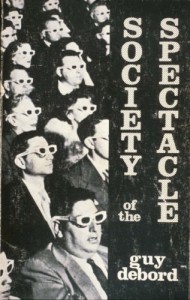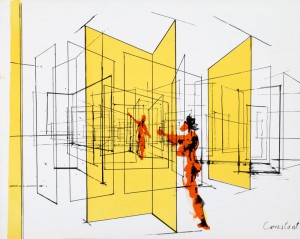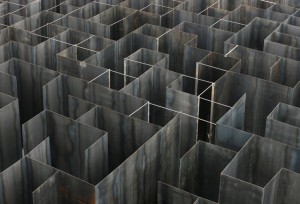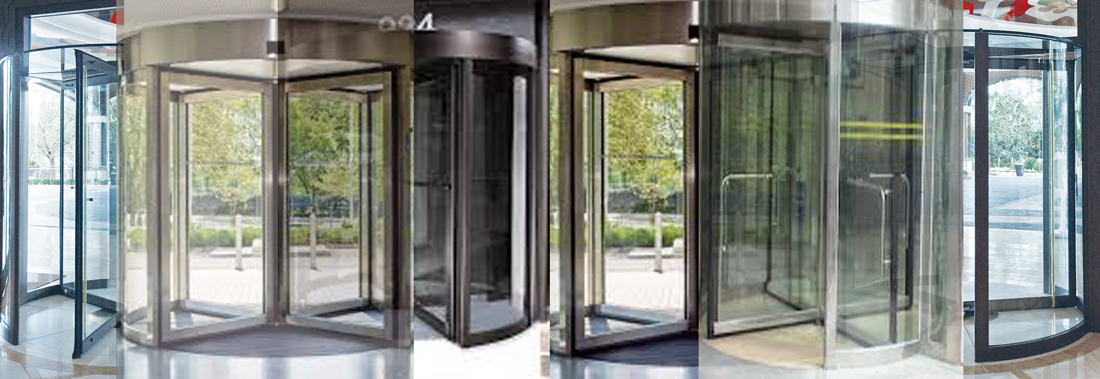Situationism is an artistic, philosophical and political movement between 1957 and 1972, influenced by Dada, Surrealism, and Lettrism. The movement was developed by Situationist International (SI) and mainly made up of leading figures like Asger Jorn, Guy Debord, and Constant Nieuwenhuys. At first, they were principally concerned with the “suppression of art”, that is to say, they wished like the Dadaists and the Surrealists before them to supersede the categorization of art and culture as separate activities and to transform them into part of everyday life. From 1962, the Situationists increasingly applied their critique not only in culture but also to all aspects of society.
Look at this video link I found on Youtube. It will be helpful to your understanding regarding an overview of Situationism.

Spectacle Society by Guy Debard 1967 [download copy]
The ‘Spectacle’ is a central notion in the Situationist theory, developed by Guy Debord in his 1967 book, The Society of the Spectacle. Here is a good description of the ‘Spectacle’.
Debord’s concept of the ‘Spectacle’ is a form of commodity fetishism. Debord emphasized that the spectacle is not a collection of images, but rather, “a social relationship between people mediated by images.” … The ‘Spectacle’ is “the concrete inversion of life” and the “autonomous movement of non-life.” The principle of the spectacle is “non-intervention.” … For Debord, capital accumulated beyond a certain threshold is transformed into images. Debord updated and expanded upon Marx’s theory of commodity fetishism, applying the idea of reification to all areas of social life.
As I understand [x], ‘Spectacle’ means the society of kind of mass media, capitalistic and consumerism. The post-war capitalism was changed to ‘consumption’ capitalism through the economic boom. For instance, the revolutionary ‘worker’ who was producing in a factory became a conformist ‘consumer’ shopping in the market. The Situationist believed that consumptive lifestyle was isolated human from society and criticized this ‘Spectacle’ environment also.
I think they didn’t want to conform to some social structure because capitalism didn’t allow it, to imagine human’s fantasy. I supposed too because the social atmosphere was focused on a function to make mass production. And also, the modern city planning didn’t leave space for imagination or expression. Most of the architecture were influenced by modernism style with technological advances, thus the building came out of functional and formalized form. Therefore they had doubt why we have to live in functional space without our desires. Therefore some of the artists start to dream of utopia.
The Dutch artist, Constant Nieuwenhuys, proposed the ‘New Babylon’ which is 1960s imaginary city concept. He expressed his ideal new world and believed that new environments would be created where everyone would be free to move around as they wished. His work implied a new form of urban life.
I was impressed by his work ‘Labyrinthine Space’.


'Labyrinthine Space / Doorlabyrinth' by Constant (up) / 'Steel Labyrinth' by Belgian artist Pieterjan Gijs and Arnout van Vaerenbergh (down)
To me, it looks like an imaginary space for play. Of course, different feelings are awoken, depending on the viewer’s insight. I felt that going through unlimited revolving doors. All of the doors seems to be taking me to other connecting spaces. So you can imagine this to be a new exit or entrance to go or do something, whenever you go through the revolving door. If so, it really needs our boring reality as a small play. I made my ideal space using revolving door’s image easily as below.

My ideal space 'Unlimited doors' influenced by Constant
At this moment the majority of the population on earth lives in an urban environment and the digital information era is attempting to decrease our play entirely. It says, even if capitalism develops more, it does not create the spare time to dream yourself. Perhaps we have lived only as conformist consumers and not as creative producers in modern society. At this point, Constant’s utopia project is and will be an excellent source of inspiration to find a solution in contemporary life as I experienced myself in that small “play space” through the revolving doors. I guess this meaning of “play” could be slightly different from what the Situationist wanted. Of course, we are living in a different period. Nevertheless, the critique of Situationists has relevance to the contemporary debate. So, it could be a good alternative measure in our society and we know such a change is possible through various appropriate behaviors. So I suggest; consider to find your own small play from now on.



